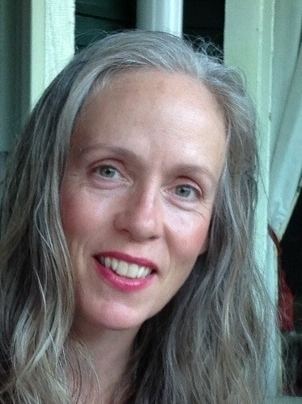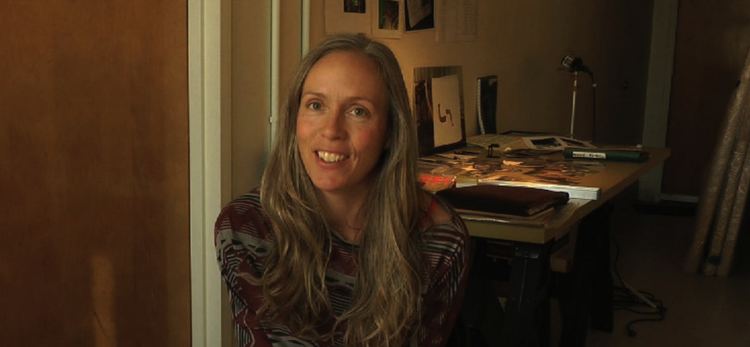Name Anne Walsh | Role Visual Artist | |
 | ||
Chris kubick and anne walsh to make the sound of fire
Anne Walsh is an American visual artist who works with video, performance, audio, photography and text.
Contents
- Chris kubick and anne walsh to make the sound of fire
- Take five anne walsh
- Biography
- Collaboration
- Artworks
- Exhibitions
- References

Take five anne walsh
Biography
Walsh is Associate Professor of Electronic Media in the Department of Art Practice at University of California, Berkeley, where she teaches video, graduate studies, and critical theory. She graduated from the California Institute of Arts, (MFA) and the University of Michigan, Ann Arbor (BA).
She has curated exhibitions for OR Gallery, Vancouver; the Beall Center for Art and Culture at University of California, Irvine; the Los Angeles Center for Photographic Studies; New Langton Arts, San Francisco, and others.
Walsh was an editor of X-Tra Contemporary Art Quarterly from 1997 to 2004, and has contributed criticism, reviews, and interviews regularly to the magazine. She is now a contributing editor to the publication.
Walsh concerns herself with language and time. And where the Met enshrines the traditional media of canonical art history—painting, sculpture, and physical artifact—Walsh makes innovative use of video, sound, and software to create art that, inherently ephemeral, resists the pull of the pedestal.
By breaking down language and sensory experience into microscopic parts, divorced from any immediate physical or social context, her pieces have been called weird or disorienting. But over time, unlikely intimations of familiarity emerge.
Collaboration
Chris Kubick and Anne Walsh, both Oakland, CA-based artists, work together under the name "Archive". They produce sculpture, works on paper, video, video games, audio cds and sound installations. From 2001 to 2005, their project 'Art After Death' centered on the overlaps of metaphysics and art history. From 2004 to 2007, they produced works from a massive commercial sound effects library, exploring the rhetorical and sculptural dimensions of these complex cultural archives. In recent video projects, Archive continues its work with specialist performers and craftspeople to focus on the residue of fantasy left behind at “historical” sites and monuments. Chris Kubick is a sound designer and lecturer in new media and sound art at U.C. Berkeley. He is also the founder and director of Language Removal Services.
Artworks
Art after Death, in which Anne Walsh and Chris Kubick interview dead artists through conducting conversations with professional spirit mediums in front of the work of the deceased artist. The resulting series of audio CDs, Conversations with the Countess of Castiglione, Yves Klein Speaks! and Visits with Joseph Cornell, are a kind of portraiture, but one in which the artist’s role is as navigators of a complex set of layered, cultural, biographical, critical, and paranormal histories. Visits with Joseph Cornell (2002) CD with accompanying 16-page booklet, featuring spirit mediums Adam Bernstein, Valerie Winbourne, Clyde Derrick, Paula Roberts, and Karl Ptery. This CD was partially funded by the Whitney Museum of American Art and was produced in conjunction with the 2002 Whitney Biennial. Yves Klein Speaks! (2002) CD with accompanying 8 page booklet, featuring spirit mediums Valerie Winborn, Karen Lundegaard, Liane Crawford and Robert Grey. This cd was recorded on location at the Menil Collection, Houston TX; SFMOMA, San Francisco, CA; and at the home of an anonymous collector in New York City.
In Full Metal Jackets (2005), a piece installed this fall at the Yerba Buena Center for the Arts in San Francisco, 28 speakers connected by a tangled web of wire hang scattered across a multi-story expanse of blank white wall. An oddly soothing rain of sound echoes through the room: metallic pings, rattles, and clatters, some sharp, some soft. At the base of the wall, white text scrolls up the screen of a small computer monitor, revealing the names of the audio files producing the sounds—among them "44 Magnum Bullet Casing Concrete Drop"; "Bullet Cartridge, Ball M9, drop to wood"; and "multishell barrage for liquid bullet effect"—some 200 sounds in all.
Walsh created the piece with her husband, artist and sound designer Chris Kubick. Along with 100 sounds already in the couple's vast sound effect library, they recorded 100 new sounds using an enormous bag of bullet casings collected at a local gun club, dropping them against different surfaces around their Oakland home. Walsh views the piece as a taxonomy of sorts, "reading the world as an archive of sound."
"Issue 2" is a rubber doorstop, or wedge featured in The Thing Quarterly. On the top surface of the wedge, set into the surface of the wedge, was a note from a young Anne Walsh, written in 1973, to the Tennis Star Billie Jean King. The note was a fan letter sent to Billie Jean King just after she had beat Bobby Riggs in the Battle of the Sexes Tennis Match.
4-channel audio installation, variable duration A room tone is a recorded element of sound design, often employed in the movie industry, to impress the sonic ambience of a depicted environment. It is the sound of “silence” in a room, though never quite silent as each room tone is inflected by different characteristics such as sonic reflections bouncing off physical architecture, the absorptive presence of bodies, and other kinds of technology present (i.e., the subtle hum of air-handling systems and lights). Room Tone is run by a computer program that generates sounds drawn from a database of approximately 1,000 room tones through four separate channels. The program may layer, cut up, and combine these room tones, varying in duration and volume, to create a new, dynamic, and visceral room tone for any particular space. Constantly changing and evolving, the aural experience of Room Tone humorously plays with the oft-cited adage of John Cage: “There is no such thing as an empty space or an empty time. There is always something to see, something to hear. In fact, try as we may to make a silence, we cannot.”
Exhibitions
Walsh's works have been shown at the Whitney Museum of American Art; the Museum of Contemporary Art, Los Angeles; the J. Paul Getty Museum; Laboratorium, Antwerp, Belgium; MUU gallery, Helsinki; Tredje Spooret, Stockholm; the Royal College of Art, London; Lothringer 13, Munich; Walter Phillips Gallery at the Banff Centre for the Arts, Alberta, and numerous other galleries and festivals in Europe, Japan, and North America.
